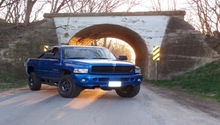Dodge Ram 2009-Present: The Ultimate Exhaust Guide
Aftermarket exhaust systems are designed to increase looks, power, and even fuel economy. This is done by increasing the exhaust gas flow through the system with piping and components that are engineered to create minimal restrictions. Some exhaust systems are designed for off-road use only, so be sure the one you choose will work in your area.
This article applies to the 4th Generation Dodge Ram (2009-Present).
The exhaust system is one of the most commonly modified systems on a vehicle. Replacing factory exhaust components with larger diameter and smoother flowing variants increases horsepower as well as torque, and delivers that great sound coming from the engine. Achieving your desired mix of sound and performance is done by installing new headers, high-flow catalytic converters, cat-back exhaust systems, and rear mufflers.
Table of Contents
Exhaust System Components Overview
Headers |
High-Flow Catalytic Converters |
Cat-back Exhaust Systems |
Rear Mufflers | |
|---|---|---|---|---|
Price |
$300-$1000+ | $100-$300+ | $300-$1000+ | $100-$200+ |
DIY Level |
Moderate | Moderate | Moderate | Easy |
Performance Gains |
15-30 hp | 5-10 hp | 5-10 hp | Up to 5 hp |
Biggest Effect On Sound: Headers
Best Value: Headers
You may be after a more aggressive exhaust note with a new rear muffler. Or perhaps you're building an all-out race engine and looking for maximum power potential with headers and a catalytic converter delete. Knowing the positives and negatives of each, along with what's legal to use on the street, will keep you out of trouble and have your truck running better than before.
Headers
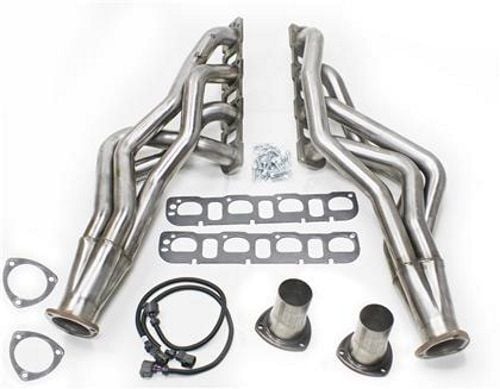
Price – $300-$1,000+
DIY Level – Moderate
Performance Gains – 15-30 hp
Headers are the first stop for the engine's exhaust gas after combustion. The exhaust gas is pushed out of the engine rapidly by the fast-moving pistons in the combustion chambers. Headers provide such great gains over manifolds because each cylinder has it's own uninterrupted path for exhaust flow. Long tube headers smooth the path even more for maximum power gains. Headers can be chromed or powder-coated practically any color to fit your engine bay's design scheme.
In the parts description for many header kits you will find whether or not the product is legal for public street use. This is due to the lack of catalytic converters. Federal law requires that your Dodge Ram be equipped with the same number of catalytic converters as with the factory setup. The catalytic converters must also be the same or comparable to the factory versions. Headers are recommended for Ram owners seeking large performance increases.
High-Flow Catalytic Converters
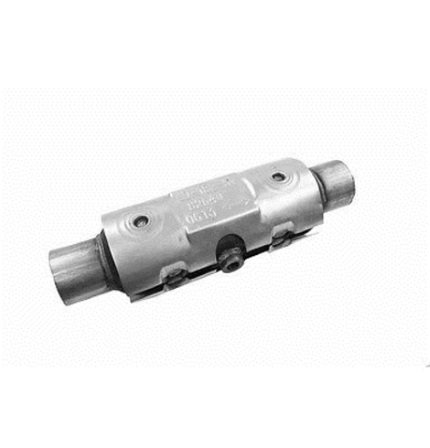
Price – $100-$300+
DIY Level – Moderate
Performance Gains – 5-10 hp
High-flow catalytic converters (or "cats") take place of one of the most restrictive components in your exhaust system. Although restrictive, the catalytic converter plays a crucial role in the reduction of emissions for vehicles driven on public streets. The Ram's computer system is programmed to receive data from the oxygen sensors, which observes how well the cat converts harmful exhaust gases into less harmful versions of the gases. It does so by passing the gases through multiple elements shaped in a honeycomb design. Some high-flow catalytic converters open up the honeycomb and reduce the inside restrictions enough to create unintended readings that set off a malfunction indicator light. In these cases, a computer programmer can manually turn it off. High-flow catalytic converters are recommended when you need maximum airflow through your exhaust system.
Cat-Back Exhaust Systems
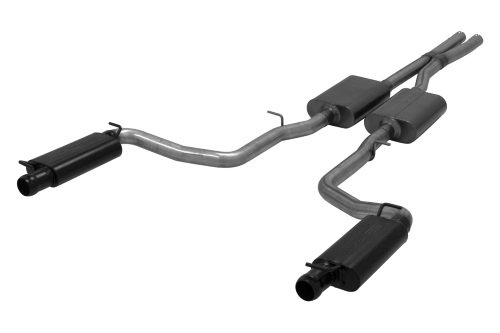
Price – $300-$1,000+
DIY Level – Moderate
Performance Gains – 5-10 hp
Cat-back exhaust systems are located down from the catalytic converter and can include a resonator delete for a higher sound level. Like other exhaust system components, the system can be made in any size and chromed or color-matched to fit your Dodge Ram. Manufacturers of cat-back exhaust systems find creative ways of routing their systems' piping for the smoothest exhaust flow possible. Cat-back exhaust systems are recommended for those looking for great sound while meeting legal requirements.
Rear Mufflers
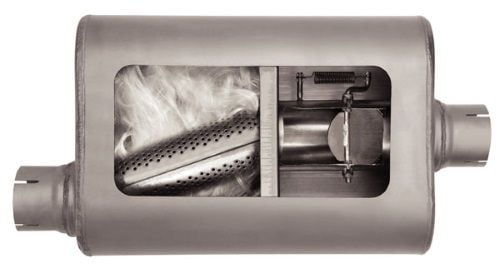
Price – $100-$200 +
DIY Level – Easy
Performance Gains – Up to 5 hp
A performance rear muffler is designed to provide minimal air flow restriction while emitting a tuned tone. Mufflers contain chambers that make the exhaust gases resonate throughout and collide with materials such as glass and fibers. Each manufacturer has its own type, and subsequently, a unique sound. Mufflers can be found with single and dual tips of many different sizes that are colored, and made of chrome or titanium. Mufflers are very easy to install, since welding is not required. Recommended for Dodge Ram owners seeking a sporty exhaust tone with improved visuals.
How to Install a Cat-Back Exhaust System
Cat-back exhaust systems are relatively easy to install other than handling the heavy weight of the piping. Sections of the exhaust may be joined by exhaust clamps or flanges that bolt together with gaskets. If your truck's original exhaust is rusted, soak the bolts and joints in penetrating oil for several hours before starting the installation. The key to a great cat-back installation is the final fitment. Make sure the exhaust tips are positioned correctly to reduce the risk of damage to the rear bumper.

Materials Needed
- Floor jack
- Jack stands (x2)
- 1/2" ratchet
- Wheel blocks (x2)
- Socket set ranging from 12 to 18mm
- Flat head screwdriver
- Penetrating oil
- Exhaust pipe clamps
- Power saw or hacksaw
This how-to guide serves as a general procedure for cat-back exhaust installations. The exhaust system you choose may have installation instructions that differ.
Step 1 – Raise and support the rear end of the truck
Depending on your truck's ride height, you may need more clearance. Place two wheel chocks in front of the front wheels, and raise both sides of the truck using the factory jacking locations. Place jack stands under the frame rails near the factory jacking points. A block of wood can be used to reduce the risk of damage to the frame.
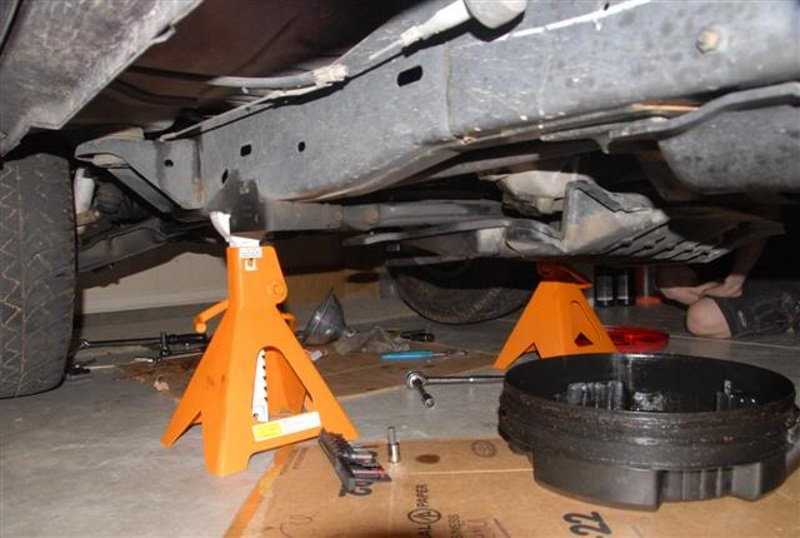
Step 2 – Remove the factory cat-back exhaust system
Using an power saw or hacksaw, cut the piping right after the rear muffler outlet. Make sure the cut is straight across. Slide the metal exhaust hangers out of the rubber grommets (silicone spray can be used to make this easier).
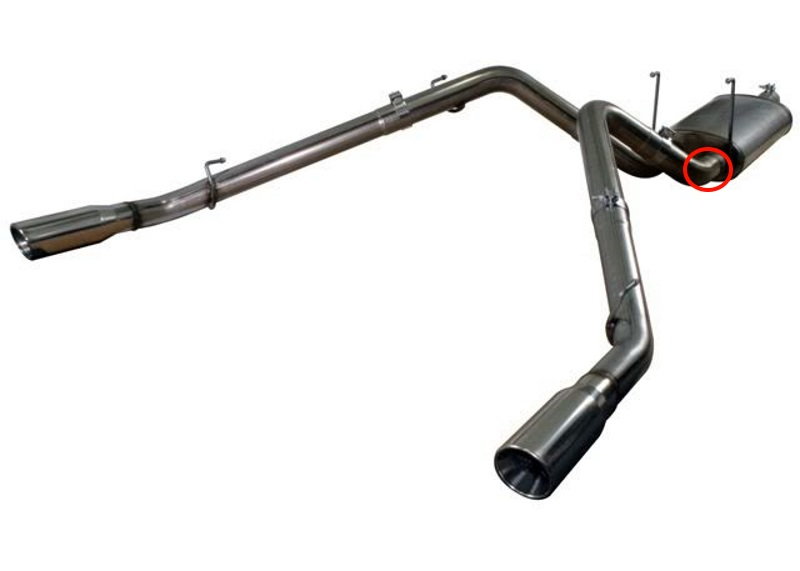
Step 3 – Install the new exhaust system
Install the components of the exhaust system front-to-back using the provided exhaust pipe clamps, but do not completely tighten the clamps. As you continue toward the tips, slide the new pipings' metal hangers into the original rubber grommets. Once the system is fully installed, begin tightening the exhaust clamps. Check the fit of the exhaust tips against the rear bumper for symmetry. You do not want the exhaust pushing up against the rear bumper, otherwise, damage and excessive vibration may occur. Some welding may be required in this step.

Figure 3. Full cat-back exhaust system. 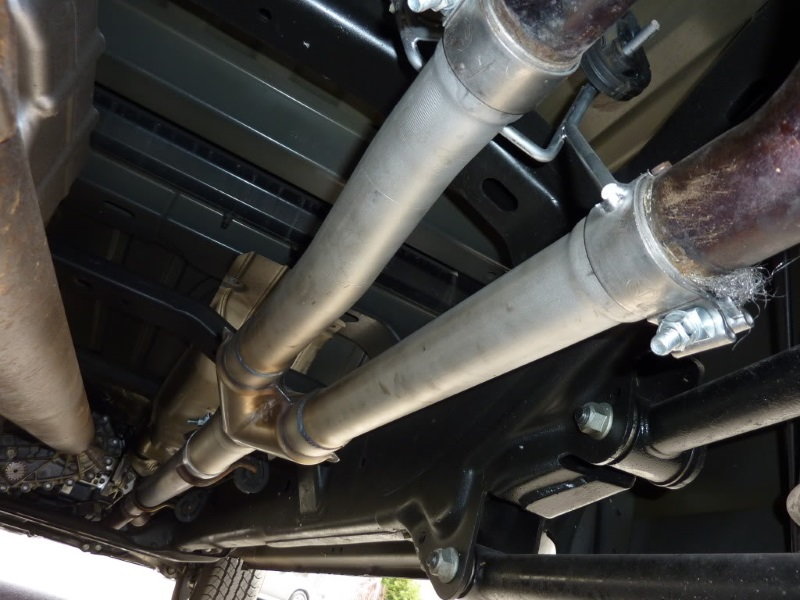
Figure 4. Use exhaust clamps to secure the piping.
Featured Video: Cat-Back Exhaust System Installation
Related Discussions
- '09 Ram Hemi Mufflex Dual Out Install By 94rt10ohio - DodgeForum.com
- Exhaust Done - DodgeForum.com






